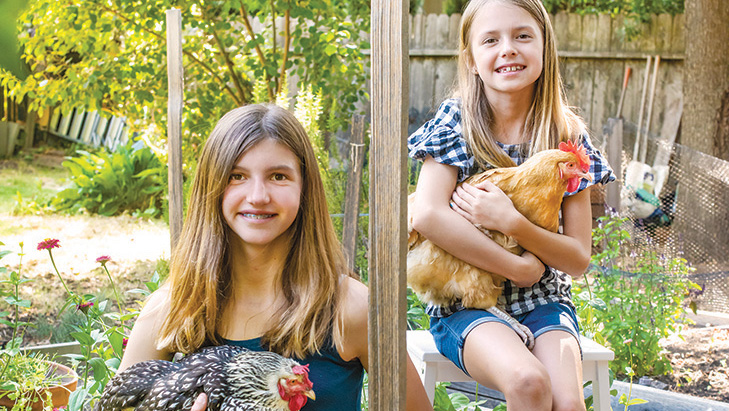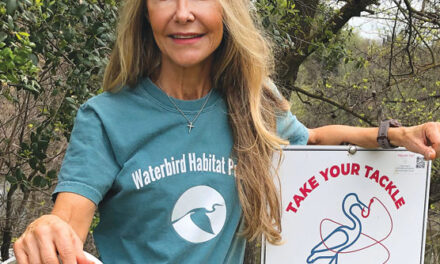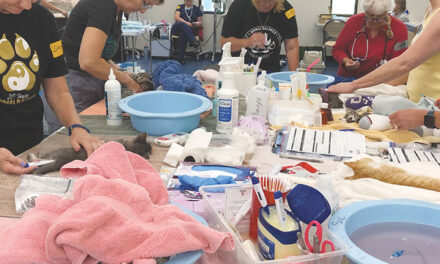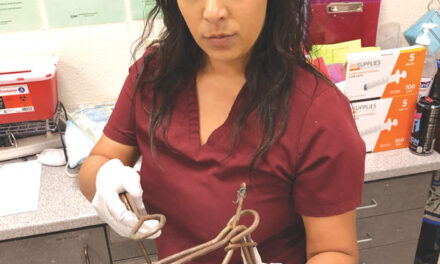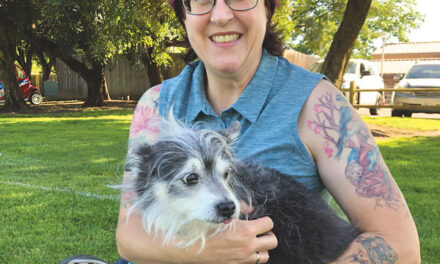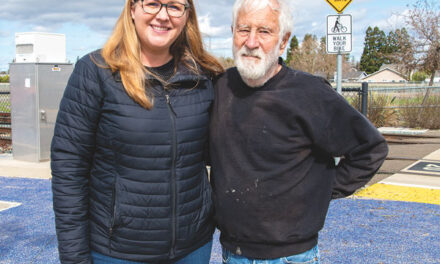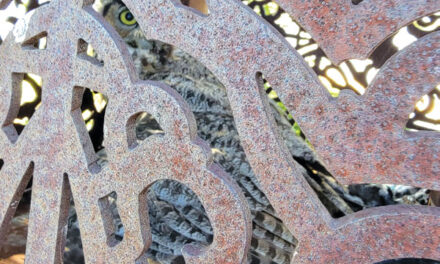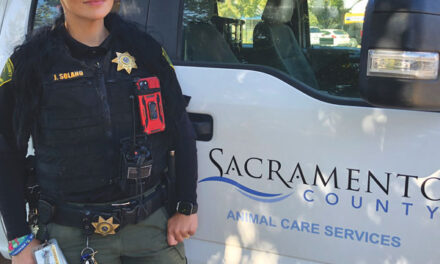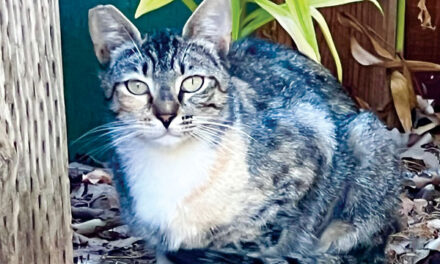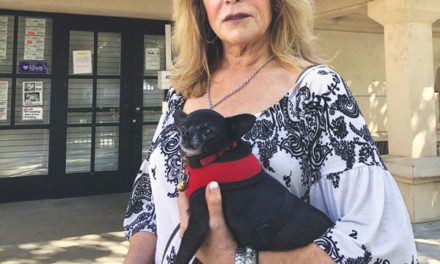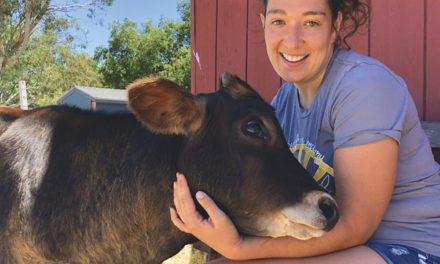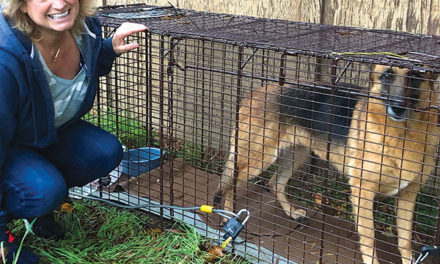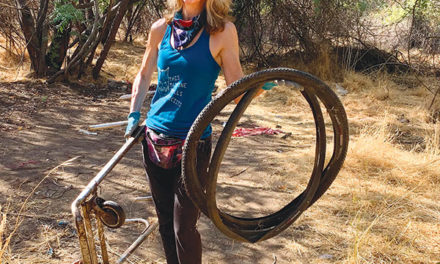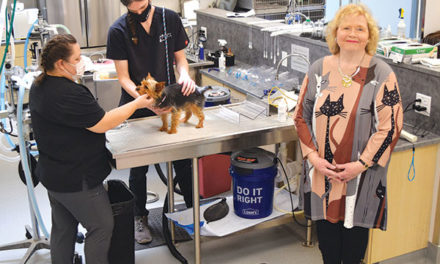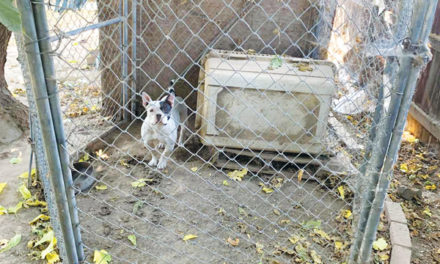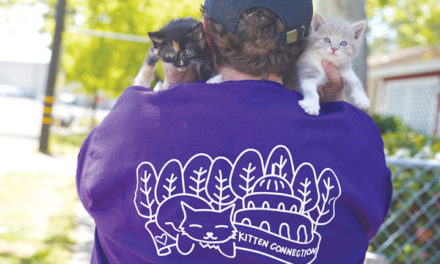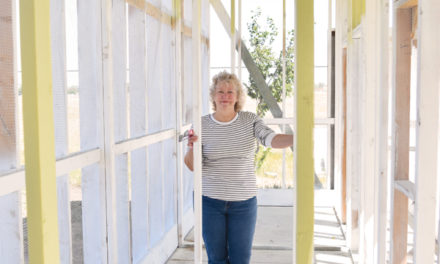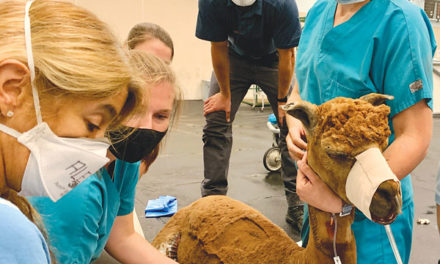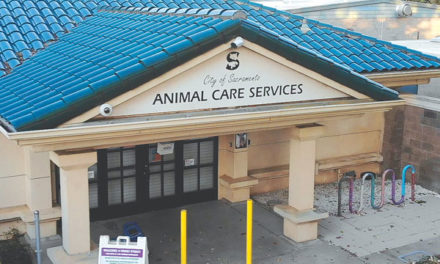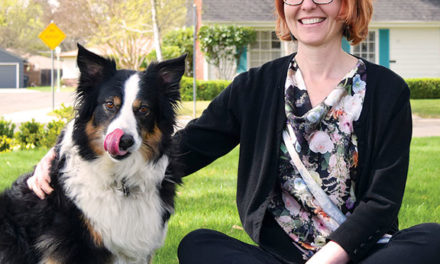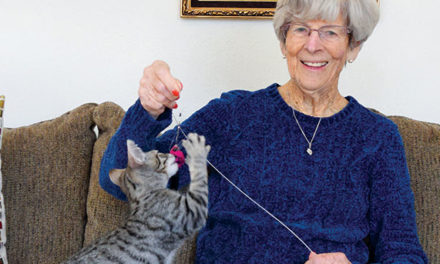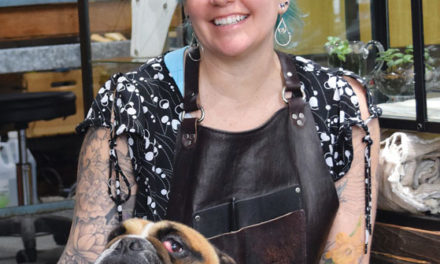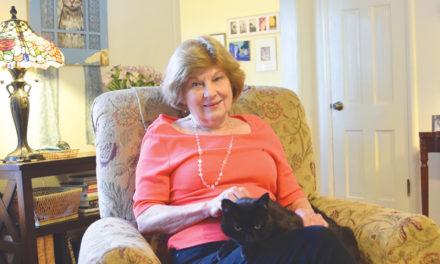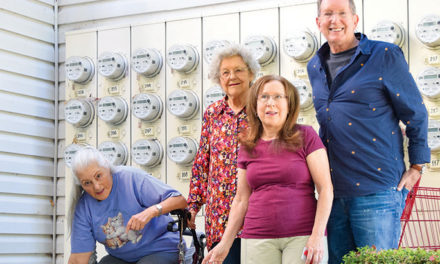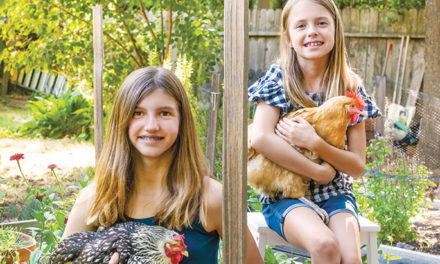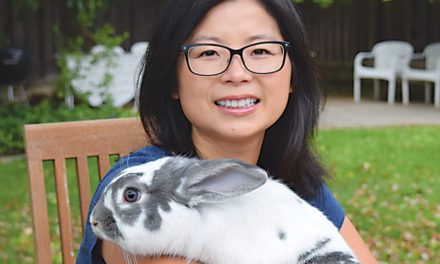In the pecking order, Anchovy is the chief chicken. She is an Ameraucana and lays pale blue eggs. “She will boss everyone around,” says Nicole Martin, who lives in Arden Park with husband Phil, and their daughters Phoebe and Lucie. “She will literally peck the others on the head.”
Anchovy barely tolerates being picked up, but loves to be around people, especially Phil when he is working in the family’s spacious backyard garden. “She follows me around the whole time,” he says.
Alessandra is a Silver Laced Wyandotte and does not like to be held. Donatella and Fabiana are Buff Orpingtons, a very friendly breed. In the chicken world, “they’re known as Golden Retrievers,” says Nicole as she strokes Donatella’s velvety feathers. “The Buff Orpingtons will crawl into your lap. They are
wonderful for families and kids.” Best of all, they are prolific at what hens do best—laying eggs.
The Martins became part of a growing trend when they acquired six 1-day-old chicks as backyard pets in 2014. “We started with six, but now we’re down to four,” explains Nicole, who is a librarian at Mariemont Elementary School and part-time Jazzercise instructor. One turned out to be a rooster and was relocated to a farm in Orangevale. The other acquired an infection and had to be humanely euthanized.
FABERGÉ OF EGGS
“When we got our first egg, we called it our $1,000 egg,” jokes Nicole. Costing only $2 a chick at a local feed store, the six fledglings started out quite inexpensive. But expenditures didn’t stop there.
Take for example the impressive backyard chicken coop—standing 6 feet tall and 10 feet wide—that Phil built using Douglas fir, redwood planks and wire mesh from plans purchased online. “People have been building this style of coop for years,” he says. “Very simple construction. Anyone could build one.”
The cost? “It was about $1,200—that’s a lot of eggs,” Phil says. “But well worth it.”
LIVING THE DREAM
Needless to say, the Martins’ free-range chickens are living the dream, with approximately 3,800 square feet of run-around space. “Our chickens are spoiled because they get let out of their coop all day, every day,” says Phil, who, when not attending to his feathered friends, is a pilot for United Airlines.
When it’s time to roost, the hens are ushered back into the safety of their mini chicken mansion, which is surrounded by wire mesh sunk 18 inches below ground so predators, such as skunks and raccoons, cannot intrude. “Every night we close up the coop, so they are totally protected,” Phil notes.
“They are great low-maintenance pets,” says Nicole. “We can leave for a day,” adds Phil. “They have their self-waterer, self-feeder and plenty of room to move around comfortably.” For longer trips, “we have lovely neighbors who are happy to help,” adds Nicole. For payment, they collect and keep the eggs.
Phil built 10 planter boxes, one devoted to being a “hot tub” so the chickens can take dust baths. “If they’re going to shake, it’s better not to be downwind,” notes Nicole.
GARDEN PARADISE
The fenced-in garden is every chicken’s paradise. The Martins planted multiple fruit trees, as well as strawberry, blueberry, raspberry, blackberry and boysenberry bushes. “They love berries,” says Nicole. “And apple cores—they will follow you around until you feed them the core.”
Depending on the time of year, the planter boxes are filled with an array of edibles, such as tomatillos, peppers, cucumbers, cantaloupe, lettuce, eggplant—and borage, which “they absolutely love,” remarks Nicole. The hens go wild for tomatoes (but not the leaves) and melons, including the seeds which the Martins call “chicken caviar.” For an extra treat during hot summers, the family cuts up a watermelon for the chickens to peck at all day.
“They also like beans and peas, but don’t bother with squash and zucchini,” says Phil, who surrounded many of the beds with wire so the hens can’t trample the bounty. “Their favorite is radish tops, for some reason. I’ve tried it myself and don’t really care for it.”
For a fertilizer, Phil cleans out the pinewood shavings, laden with chicken droppings, from the coop and spreads the nutrient-rich material around the garden. “And they keep us pretty clean of snails,” says Phil. “Our neighbor throws her snails over the fence and they go crazy,” adds Nicole with a laugh.
To adopt a hen, visit the Sacramento County Bradshaw Animal Shelter which receives a variety of chickens year-round that need homes.
Cathryn Rakich can be reached at crakich@surewest.net.



